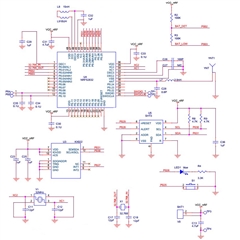Hi,
I try configure 2 gpio pins with opposite pull state, one NRF_GPIO_PIN_PULLUP, other NRF_GPIO_PIN_PULLDOWN:
nrf_drv_gpiote_in_config_t in_config = GPIOTE_CONFIG_IN_SENSE_LOTOHI(false);
in_config.pull = NRF_GPIO_PIN_PULLUP;
err_code = nrf_drv_gpiote_in_init(PIN_BUTTON, &in_config, button_handler);
APP_ERROR_CHECK(err_code);
nrf_drv_gpiote_in_event_enable(PIN_BUTTON, true);nrf_drv_gpiote_in_config_t in_config = GPIOTE_CONFIG_IN_SENSE_LOTOHI(false);
in_config.pull = NRF_GPIO_PIN_PULLDOWN;
err_code = nrf_drv_gpiote_in_init(PIN_IMPULSE, &in_config, impulse_handler);
APP_ERROR_CHECK(err_code);
nrf_drv_gpiote_in_event_enable(PIN_IMPULSE, true);
But, callback don`t called.
If I configure with same pull state, then callback is called.
Why is this occurs? How to set up pins with diffrent pull state?
Thank you!



